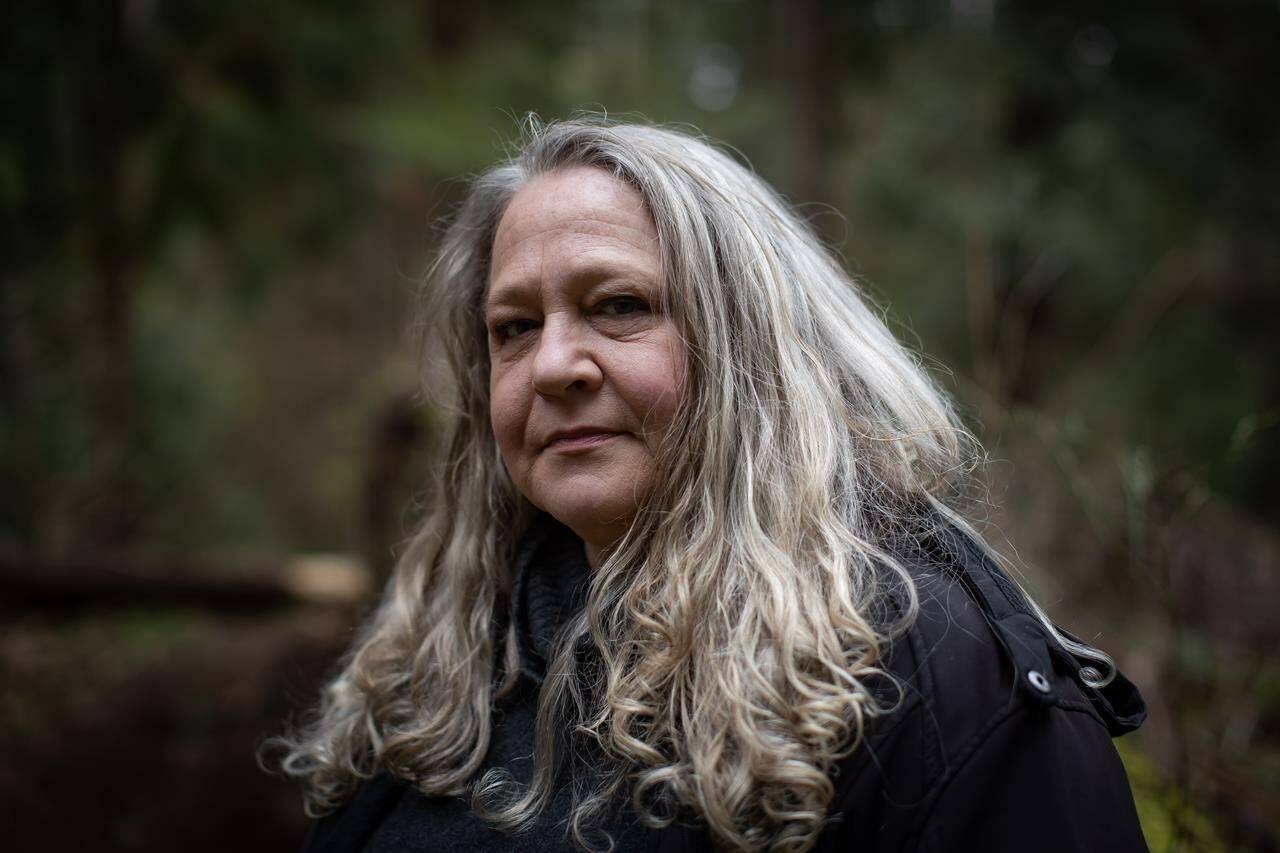In early 2020, Bev Pausche felt like she may have a shot at a better life after two years of intensive treatment, including chemotherapy and a bone-marrow transplant, brought her lymphoma into remission.
Then the COVID-19 crisis hit. In the two years since, the 54-year-old says her life has become smaller and smaller to the point that she’s moving away from her community in West Vancouver to Nova Scotia, because it doesn’t make much of a difference where she lives if she doesn’t feel safe leaving her home.
Pausche, who founded the Immunocompromised Canada website, says early in the pandemic, it seemed like widespread recognition of the virus’s dangers galvanized public will to keep everyone safe.
But as most able-bodied people have reaped the full benefits of vaccination, Pausche says she feels like Canadians who face higher health risks from COVID-19 are being overlooked as others appear eager to put the pandemic in the past.
The removal of public health restrictions in a number of provinces has put vulnerable people in the impossible position of choosing between their health and their ability to see loved ones, go to work and school, and even get groceries and medical care.
“You feel very left out of what makes your life meaningful,” Pausche says. “The only thing I had when I was sick was hope. And they’re taking that from us too.”
Experts and disability activists say it’s a familiar disappointment after two years of pandemic policies have failed to factor in the needs of Canadians more vulnerable to the impacts of the disease.
“Since the beginning of the pandemic, there have been calls for the inclusion … and prioritization of people with disabilities,” says Hilary Brown, an assistant professor at University of Toronto’s Dalla Lana School of Public Health. “And consistently, it seems like that just hasn’t happened.”
Many provinces have cited high vaccination rates and lower levels of viral circulation in announcements overrecent weeks to drop or relax COVID-19 rules,including mask requirements, vaccine passports, capacity limits and mandatory immunization policies.
In response to inquiries about how this shift will affect high-risk individuals, officials in several provinces emphasized that people can still take personal precautions, such as wearing a mask.
Brown, an epidemiologist who researches disability and reproductive health, calls this approach “problematic.”
“It places the burden of responsibility for protection on the individual rather than making it a structural and systemic responsibility,” she says. “That disproportionately negatively impacts people with disabilities.”
Nearly one in four Canadians aged 15 and older have a health condition that puts them at higher risk of severe COVID-19 outcomes, Statistics Canada reported in July 2020.
Fourteen per cent of adults have a condition that compromises their immune system, the agency said. Several studies suggest that the immune response triggered by vaccines is “substantially decreased” in some immunocompromised individuals compared to healthy vaccine recipients, according to the National Advisory Committee on Immunization.
The Public Health Agency of Canada has said it’s even more important for people at higher risk of severe COVID-19 outcomes to wear high-quality masks, even if face coverings aren’t required in their jurisdiction.
It remains to be seen how the easing of COVID-19 restrictions will play out, Brown says but it’s a safe bet that people with disabilities will pay an outsized price if things don’t go as planned.
In a CMAJ paper published in January, Brown and a team of researchers analyzed 1,279 hospital admissions in Ontario between Jan. 1, 2020, and Nov. 30, 2020, and found that patients with a disability had higher death rates, longer hospital stays and more readmissions than those without a disability.
Brown says these findings underscore the systemic factors that make people with disabilities more susceptible to infection, such as living in congregate settings, experiencing poverty and requiring support from external caregivers.
Removing restrictions will only ratchet up these risks unless structural supports are put in place to counteract them, she says.
“Together, we can protect the community and make sure that everyone has … equal rights to go along with their daily lives as they wish to.”
David Pettinicchio, a political sociologist at University of Toronto, says people with disabilities and chronic health conditions have faced some of the most severe disruptions because of pandemic protocols, including barriers to accessing medical care, increased isolation and financial insecurity.
Everyone wants to see a return to “normal,” Pettinicchio says, but that can’t happen if recovery for some comes at the expense of the safety and inclusion of others.
“We’re entering this period of freedom … (but) that doesn’t mean freedom for everyone,” he says. “I don’t think there’s an expectation that these countermeasures will forever be in place. But I do think there’s an expectation that the circumstances of (people with disabilities) be taken into account.”
Alyssa Denis, an advocate for Canadians with chronic illnesses in Calgary, doesn’t think it’s so much to ask able-bodied people to take modest precautions that would allow vulnerable members of the population some semblance of normalcy every now and then.
“I strongly feel that society and the government have forgotten about people like myself,” says Denis, who has lupus and is a cervical cancer survivor. “It’s like we don’t exist and we don’t matter.”
Denis says she’s heard people argue that high-risk individuals should just stay home if they’re uncomfortable with the easing of COVID-19 measures. But Denis says that’s exactly what she’s been doing during the past two years of near-complete isolation.
With the exception of a few wheelchair curling games, Denis says the only people she’s spent time with indoors since the pandemic started are her parents and health providers. And with the elimination of mask mandates, even those interactions are fraught with added risk.
“This isn’t living. This is surviving,” Denis says. “Why can’t we have lives too?”
—Adina Bresge, The Canadian Press
RELATED: Pfizer confirms COVID pill’s results, potency versus omicron
RELATED: Public health mandates could return, Tam warns, but favours lighter touch in future

